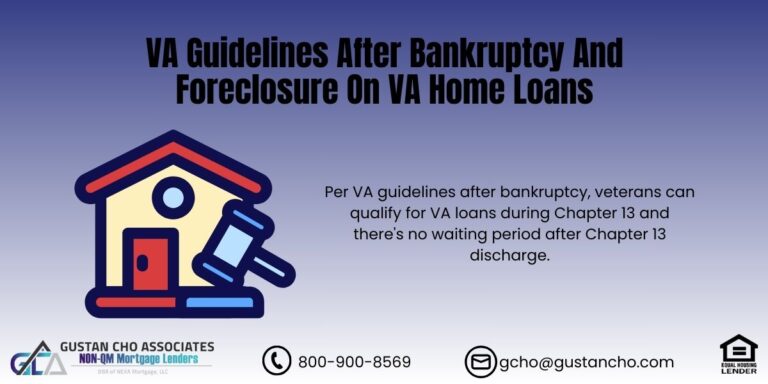DTI Manual Underwriting Guidelines on FHA and VA Loans
DTI manual underwriting guidelines on FHA and VA loans are similar. FHA and VA loans are the only two loan programs that allow manual underwriting on home mortgages. Many people are often confused about the differences between manual underwriting and automated underwriting system (AUS) approved files. Manual and AUS-approved underwriting is the same. However, with manual underwriting, a human mortgage underwriter will carefully manually underwrite the file. The maximum debt-to-income ratios are lower on manual versus automated underwriting system-approved loans.
What Are The Major Differences Between Manual And Automated Underwriting?
The only major difference between manual and automated underwriting system-approved files is the debt-to-income ratio guidelines. Manual underwriting requires lower debt-to-income ratios than AUS-approved underwriting borrowers. How high the debt-to-income ratio the borrower can go up is determined by compensating factors and underwriter discretion.
On manual underwriting, the mortgage underwriter has major power via underwriter discretion. It is up to the mortgage underwriter to determine whether or not the borrower is qualified for a mortgage. The debt-to-income ratio is a major factor in approving manual underwriting borrowers.
What Is Manual Underwriting And How Does It Work?
If you have been following our blogs, you are aware that Non-QM Mortgage Lenders specializes in manual underwriting on FHA and VA loans.
While the majority of banks and mortgage companies do not allow manual underwriting, we do not have any LENDER OVERLAYS on government and conventional loans. A large percentage of our borrowers are manual underwriting homebuyers.
Manual Underwriting Versus Automated Underwriting System Approval?
Our mortgage underwriters want to make the deal work. They are not looking for excuses to kill a deal rather they are trying to do everything possible to make the deal work. On manual underwriting borrowers, the recommended max debt-to-income ratio by HUD and the Veterans Administration (VA) is 40% front-end and 50% back-end debt-to-income ratio with two compensating factors.
Mortgage Underwriter Discretion on Manual Underwrites
Mortgage underwriters can exceed the maximum DTI threshold via mortgage underwriter discretion if the underwriter believes the borrower is a good risk due to strong compensating factors. Our aggressive no-lender overlay business model platform is why we are able to help more borrowers than most banks.
How Are Debt To Income Ratios Calculated By Mortgage Underwriters?
First, we must understand the definition of debt-to-income ratios.
- There are two separate ratios involved with debt to income.
- There is a “front-end” debt-to-income ratio and a “back-end” debt-to-income ratio.
- The front-end debt-to-income ratio is simply your housing payment divided by your total gross income.
The back-end debt-to-income ratio is your housing payment plus all consumer debts divided by total gross income.
Case Scenario On How Underwriters Calculate DTI
Example:
- A borrower makes $60,000 a year or $5,000 a month.
Borrowers debts:
- The car payment is $350.
- Student loans are $200.
- Credit cards $150.
- Total Debts = $700.
The new housing payment will be $1,750
- Front end DTI: $1,750 / $5,000 = 35%.
- Back end DTI: ($1,750 + $700) / $5,000 = 49%.
In this example, the borrower’s debt-to-income ratio is 35% / 49%.
Automated Underwriting System Approval Versus DTI Manual Underwriting Guidelines
When you receive an automated AUS approval, your debt-to-income ratio may be higher versus when you manually underwrite. On VA loans, there are no true debt-to-income ratio requirements. Since we do not have any lender overlays we have closed VA loans with back-end debt-to-income ratios over 62%.
The key to getting an AUS approval with high debt-to-income ratios on VA loans is for the borrower to have strong residual income.
With FHA loans, the maximum debt-to-income ratio allowed is 46.9% front-end and 56.9% back-end debt-to-income ratio per AUS findings. In order to go up to 56.9%, typically you need a strong credit score and at least one month of reserves.
What Is Manual Underwriting Versus Automated Underwriting System Approval

What about manual underwriting?
Manual underwriting is slightly different. The HUD 4001.1 HANDBOOK clearly states debt to income ratio requirements for FHA manual underwriting mortgages. The requirements are different based on COMPENSATING FACTORS. Please click the link for more details.
Below is the debt-to-income requirements for FHA manual underwriting.
- NO CREDIT SCORE – DTI is capped at 31% / 43%
- 500 – 579 credit score – DTI is capped at 31% / 43%
- 580 and above – max DTI is 31% / 43% WITHOUT compensating factors
- 580 and above – max DTI is 37% / 47% with ONE compensating factor
- 580 and above – max DTI is 40% / 50% with at least TWO compensating factors
How Compensating Factors Affect DTI Manual Underwriting Guidelines on FHA and VA Loans
A few examples of Compensating factors:
3 months of reserves (for 1 – 2 unit properties):
- 6 months reserves (for 3 – 4 unit properties)
- Low payment shock (housing payment does not increase by more than 5%)
- Longevity on job
- Residual income
DTI Manual Underwriting Guidelines on VA Loans
VA mortgages are once again a little different when it comes to manual underwriting and debt-to-income ratios. While there is no true max that-to-income ratio guideline, we have yet to have a mortgage approved with a higher than 54% back-end ratio. The underwriter must be able to comfortably sign off that you have the ability to repay the mortgage.
Mortgage Underwriters Need To Determine The Borrower’s Ability To Repay New Housing Payment
The ability to repay act is an outcome of the real estate financial crisis of 2008. When the government stepped in and overtook regulations for mortgages, they introduce the ability to repay act. Please see the CFPB Website for more information on the Ability To Repay Act. This is a step in the right direction for mortgage regulation. Now each borrower must document they can repay their mortgage before qualifying for the loan.
Qualifying For VA and FHA Loans With No Overlays on DTI Manual Underwriting Guidelines
Since the majority of our clients have been turned down by other lenders, many times they are skeptical to start the process with Non-QM Mortgage Lenders This is why we encourage our clients to check out our amazing reviews. We are available to answer your questions seven days a week, in the mornings, or evenings. We pride ourselves on training our loan officers to be up to date on mortgage guidelines. The majority of loan officers in this business want clients with a 700+ credit score with a significant down payment. Most of our clients do not fit into that category.
Over 75% of Our Borrowers Are Folks Who Could Not Qualify at Other Lenders
Over 75% of our borrowers at Non-QM Mortgage Lenders are folks who could not qualify at other lenders due to a last-minute mortgage loan denial or due to lender overlays. Whether you received a last-second denial or simply want another opinion about your mortgage, please contact us at Non-QM Mortgage Lenders at 800-900-8569 or text us for a faster response. Or e-mail us at gcho@gustancho.com.
One of our highly trained loan officers will assist you with your mortgage needs. The path to homeownership can be difficult, which is why it is important to come to the experts. Lender overlays get in many Americans’ ways of achieving the dream of homeownership.
Who Chooses Whether a Homebuyer Needs Manual or Automated Underwriting?
FHA Manual Underwriting Guidelines apply for borrowers who cannot get approve/eligible per AUS. Borrowers who get referred/eligible per Automated Underwriting System may be able to qualify for manual underwriting. Refer/Eligible per AUS means that the automated system cannot render automated approval and approve/eligible per DU FINDINGS but may be eligible to qualify for an FHA loan if it is underwritten by a human mortgage underwriter.
Only FHA and VA loans allow for manual underwriting. Conventional loans cannot be manually underwritten. The mortgage underwriter has a lot of underwriter discretion on manual underwriting files. The key to getting approved on manual underwrites is timely payments in the past 24 months.
What Does Manual Underwriting Mean?
FHA Manual Underwriting means that a mortgage underwriter will manually underwrite the FHA mortgage loan application. FHA and VA Loans are the only two loan programs that allow manual underwrite. FHA and VA have similar agency mortgage guidelines on manual underwriting:
- Careful scrutiny is placed on all manual underwriting home loans
- The mortgage underwriter has a lot of power and discretion on manual underwrites
- The risk level is higher for the lender on all manual underwrites versus AUS-approved findings
On manual underwriting, the mortgage underwriter carefully reviews the following information:
- borrowers income
- assets
- liabilities
- credit
- credit scores
- credit history
The ability to repay the new housing payment is always in the back of the mortgage underwriter’s mind. Underwriters will look for compensating factors the borrower has to offset the layered risk of manual underwrites.
How Mortgage Underwriters Analyze Derogatory Credit Tradelines
Mortgage underwriters will question derogatory credit information, public records, debt to income ratios, and look for compensating factors. Compensating Factors are positive factors borrowers have to offset bad credit or less-than-perfect financial profile.
Examples of Compensating Factors Accepted By Mortgage Underwriters on Manual Underwrites
Examples of compensating factors are the following:
- reserves
- longevity on the job
- verification of rent
- income such as part-time income that is not used as qualifying income
- spouse with income but not on the mortgage loan
- larger down payment
- other positive factors the borrower has
All FHA Loans during and right after Chapter 13 Bankruptcy discharge are all manual underwriting. This is because the automated underwriting system does not render an automated approval until at least two years have passed from the Chapter 13 Bankruptcy discharge date. Home Buyers can qualify with a waiting period for an FHA Loan after the Chapter 13 Bankruptcy discharge date without any waiting period with a manual underwrite.
Eligibility of FHA Manual Underwriting
To be eligible for FHA Manual Underwriting, borrowers need timely payments in the past 12 months. FHA Manual Underwriting Guidelines On Verification Of Rent will require borrowers to have verification of rent. Verification of Rent is only valid if borrowers can provide 12 months of canceled checks and/or 12 months of bank statements to the underwriter.
Verification of Rent Requirement on Manual Underwrites
Borrowers need to have been timely with all rental payments for the past 12 months. No 30-day late payments with any rental payments. If the borrower has paid their rental payments online, then 12 months of bank statements will be required to validate the verification of rent showing the exact rent payment leaving the bank account.
The landlord also needs to complete a form of rental verification. VOR Form will be provided by the mortgage lender. If a borrower is living rent-free with a family member and does not have rental verification, we will exempt the verification of rent requirement.
What Is Payment Shock

The importance of verification of rent is due to determine payment shock. Payment Shock is the proposed new mortgage payment a home buyer will have compared to the monthly rental payments they have been paying. If the renter has been paying $1,000 per month in rent and the new P.I.T.I. ( principal, interest, taxes, insurance ) is $1,000, there is zero payment shock. This is because the new mortgage payment is the same as the rental payment the borrower has been paying.
FHA Manual Underwriting Guidelines: Low Payment Shock Is Considered Compensating Factor
If the new proposed housing payment will be $1,200 per month and the old rental payments were $1,000 per month, then the home buyer will have a $200 payment shock or 20%. If the home buyer has been renting and has been paying timely rental payments but was paying with cash, that will not count as verification of rent.
Renters should always pay their rental payments with checks or online to show documentation. For renters renting from a property management company, then bank statements and canceled checks are not required. A verification of rent form which is provided by the lender and completed and signed by the property management company manager will be sufficient in lieu of 12 months canceled checks and/or bank statements.
DTI Manual Underwriting Guidelines On Reserves
On manual underwriting, the mortgage underwriter will most likely want to see three months of reserves by the mortgage loan borrower. One month’s reserves are equivalent to one month’s of P.I.T.I., which is principal, interest, taxes, and insurance as well as HOA fees if applicable.
FHA allows 100% gifted funds for the down payment and closing costs on a home purchase. However, reserves cannot be gifted and need to be the borrower’s own funds. Reserves do not have to be liquid cash in bank accounts. Retirement and investment accounts can be used for reserves. Asset accounts such as IRAs, 401k, and securities investment accounts can be used for reserves.
How To Get Manual Underwrite Mortgage With a Lender With No Overlays
Home Buyers in need of an aggressive mortgage lender with no mortgage overlays on government and conventional loans and specializing in manual underwriting, please do not hesitate to contact us at 800-900-8569 or text us for a faster response. Or email us at gcho@gustancho.com. We are specialists in both VA and FHA manual underwriting. We help many folks who just recently got a Chapter 13 Bankruptcy discharge without any waiting period after the discharge date.
What Are FHA TBD Manual Underwriting Pre-Approvals
There Are Many Benefits Of FHA TBD Manual Underwriting Guidelines As Pre-Approvals for borrowers with bad credit or those who are considered marginal borrowers. At Non-QM Mortgage Lenders we are constantly expanding the programs we offer to our clients. We are excited to announce updates to our “To Be Determined” underwriting process. We are able to “TBD” underwrite manually underwritten mortgage loans.
FHA and VA Manual Underwriting Lending Experts And Mortgage Lenders
Non-QM Mortgage Lenders Mortgage specializes in FHA and VA manual underwriting. We now have the ability to underwrite your file before you put an offer on a property. We will detail and explain how manual underwriting works and the mortgage process on our TBD process for manually underwritten loans.
What Does FHA TBD Manual Underwriting Mean?
First, it is important to understand what a manual underwrite means. All lenders follow the same guidelines, although some lenders add additional lender overlays. Non-QM Mortgage Lenders does not. We go off the agency guidelines and nothing further. When completing your automated underwriting system, the algorithm will determine your risk and qualifications based on the items you provide combined with your credit report.
Automated Underwriting System Findings (AUS Approval)
The automated underwriting system will factor in payment history, credit score, income, and assets/ reserves to calculate your qualifications There are a few different responses the automated underwriting system will produce. The best possible outcome is called approve/eligible. This means based on the information provided, your file has automated approval and is eligible for sale on the secondary market. Hence the terms, “approve” and “eligible”. For more on AUS, see our AUS BLOG.
DTI Manual Underwriting Guidelines Versus Automated Underwriting System

The second-best outcome is referred/eligible. The first word refer to means you need to downgrade this file to a manually underwritten loan. Eligible still stands for being eligible for sale on the secondary market.
Manual underwriting is when an underwriter needs to go through your file with a fine-tooth comb. The underwriter makes sure you qualify based on manual underwriting guidelines, which are more strict with income ratios and reserve requirements.
DTI Manual Underwriting Guidelines Refer/Eligible Versus Automated Approval Findings
Your AUS may receive refer/ineligible reports. Once again, the first word “refer” means you may manually underwrite this loan, it did not get an automated approval. However, the second word “ineligible” means this loan is ineligible for sale on the secondary market and the lender cannot close this file. The second word must say “eligible” in order to qualify. If the loan is not eligible for sale on the secondary market, it means the file does not meet agency guidelines.
Case Scenario on DTI Manual Underwriting Guidelines
For the purpose of this blog, we will focus on refer/eligible manually underwritten files. We do not expect you to know the automated underwriting system terminology. However, if you have been turned down by your current lender, it is a good idea to have them send you your AUS report. This will give us insight into what is holding back your qualifications. Below are a few tips for passing manual underwriting guidelines.
FHA Manual Underwriting Underwriting Analysis
Keys for FHA manual underwriting:
- Down Payment: Credit scores 500 – 579 need at least a 10% down payment
- Credit scores 580 and higher need at least a 3.5% down payment
- Gift funds are allowed for the down payment and gift funds
- However, gift funds are not viewed favorably by mortgage underwriters
Importance of Timely Payments in the Past 12 Months
Importance of on-time payments. Installment debts and housing payments must be current. You cannot have any 30-day late payment in the previous 12 months and no more than 2×30-day late payments in the previous 24 months. If you were more than 30 days late in the past 24 months, you need to wait until that late payment is seasoned. Installment debt includes auto payments, personal loans, and student debt
The installment account has the same payment every month. So, you know what to pay, this is the reason guidelines are not lenient installments that pay. When you take out an installment loan, you know what your payment will be every month. This should allow you to budget accordingly
HUD Guidelines on Revolving Accounts
- No major derogatory payments on revolving credit cards in the past 12 months
- A major derogatory payment is defined as 1×90 daily payment, or 3×60 day late payments
FHA Loan Guidelines on Collection Accounts
- You may not have any non-medical collections in the past 12 months
- Any recent collections will disqualify you from passing a manual underwrite
Outstanding collections and charged-off accounts do not have to be paid to qualify for an FHA loan.
Documents Required To Start The Mortgage Process
Documentation is key for manually underwritten loans. A rental verification will be completed to make sure your housing payments are on time. If you rent from a large management company, we can verify your payment history through them. If you rent from a small landlord or a family member, we will need to see 12 canceled checks showing on-time payment history for your rental. An underwriter is responsible to cover all bases. For example, if you are in mortgage modification, the underwriter must verify at least 12 on-time payments to be modified agreement.
Credit Disputes During The Mortgage Process

Disputed accounts on your credit report will stall the process:
- If you are disputing accounts totaling $1000 or more, you must call the credit bureaus and remove the verbiage dispute
- All non-medical collections will use a 5% monthly payment
- That is 5% of the total monthly balance
- Even with the manually underwritten long, charge-offs do not count against your debt-to-income ratio
- Just like any FHA loan, the same waiting period stands for derogatory credit
Your case number must be assigned after the waiting period for all events such as a foreclosure, short sale, deed-in-lieu, Chapter 7, or Chapter 13 bankruptcy.
Waiting Period After Bankruptcy, Foreclosure, Late Payments
Waiting Periods:
- Foreclosure, short sale, deed-in-lieu – 3 years from the date the property is transferred out of your name (see county records for exact date)
- Chapter 13 bankruptcy – eligible after you have made at least 12 on-time payments to the trustee, NO WAITING PERIOD AFTER DISCHARGE
- Chapter 7 bankruptcy – 2 years after discharge
DTI Manual Underwriting Guidelines On Nontraditional Credit Tradelines
Nontraditional credit tradelines can be applied for manually underwritten files. For more information please see our blog on non-traditional credit. As mentioned above, when manually underwriting an FHA loan, there is a more strict debt-to-income and reserve requirements. If you are going to have your debt-to-income ratios above 31/43, you must have compensating factors. Those compensating factors include verified cash reserves, minimal increase in housing payment, residual income, and significant additional income not reflected on your mortgage application.
DTI Manual Underwriting Guidelines On TBD Pre-Approvals
DTI limits for manual underwriting based on credit scores:
- No credit score – 31/43
- 500 – 579 – 31/41
- 580 and above – 31/43 (with no compensating factors)
- 580 and above – 37/47 (with one compensating factor)
- 580 and above -40/40 (with no discretionary debt)
- 580 and above – 40/50 (with two compensating factors)
FHA TBD Manual Underwriting Reserve Guidelines

Reserve requirements for manual underwriting:
- 1 – 2 unit properties -1 month of PITIA (Principal, interest, taxes, insurance, and any association dues)
- 3 – 4 unit properties -3 months of PITIA (Principal, interest, taxes, insurance, and any association dues)
When using reserves for a compensating factor, you need to verify more funds
- 1 – 2 unit properties -3 months of PITIA (Principal, interest, taxes, insurance, and any association dues)
- 3 – 4 unit properties -6 months of PITIA (Principal, interest, taxes, insurance, and any association dues)
It is important to understand that reserve funds stay in your bank account. However, they are an underwriting requirement in case something catastrophic pops up like you lose your job. This will give you some time to get back on your feet and not fall behind on mortgage payments.
Selecting An Expert Lender on FHA TBD Manual Underwriting
If you are not in the mortgage industry, you are probably confused by this overload of information. That is why we are here. We are experts in manual underwriting. Once we have your completed application and documentation, we will send your file directly to an FHA underwriter. They will underwrite your credit report and assets and issue a true PRE-APPROVAL.
This will allow you to shop for a home with confidence. once you find your dream home, we will order the appraisal and title report and ask for a few updated documents. The process will be quick and easy, and we can close in as little as three weeks. To discuss your TBD underwriting qualifications, please contact us at Non-QM Mortgage Lenders at 800-900-8569 or email us at gcho@gustancho.com. Text us for a faster response.







